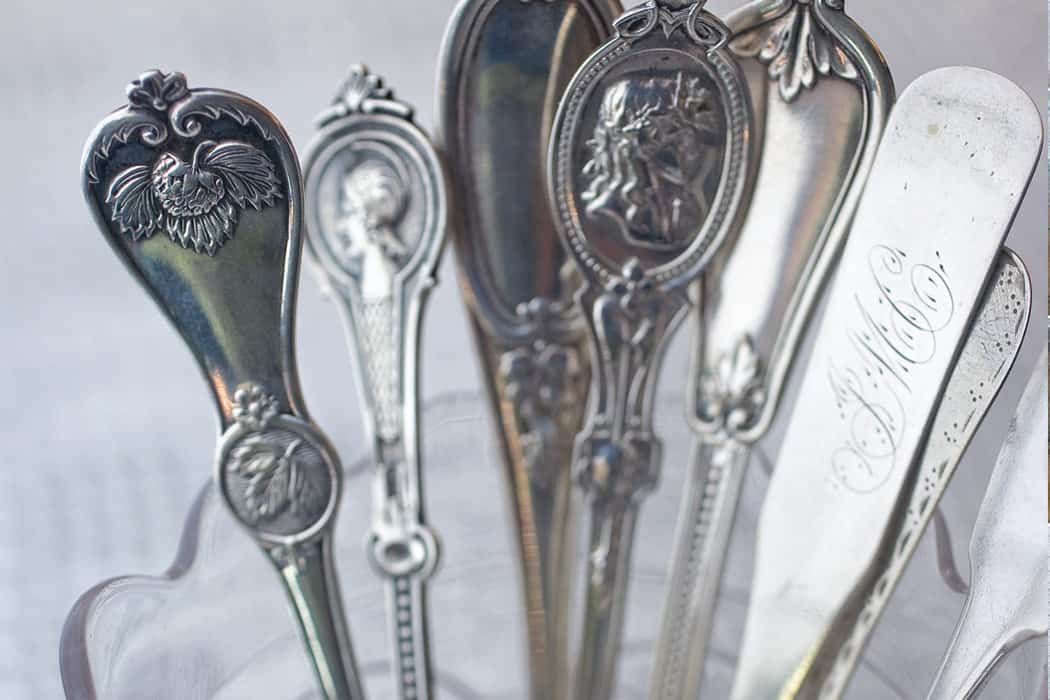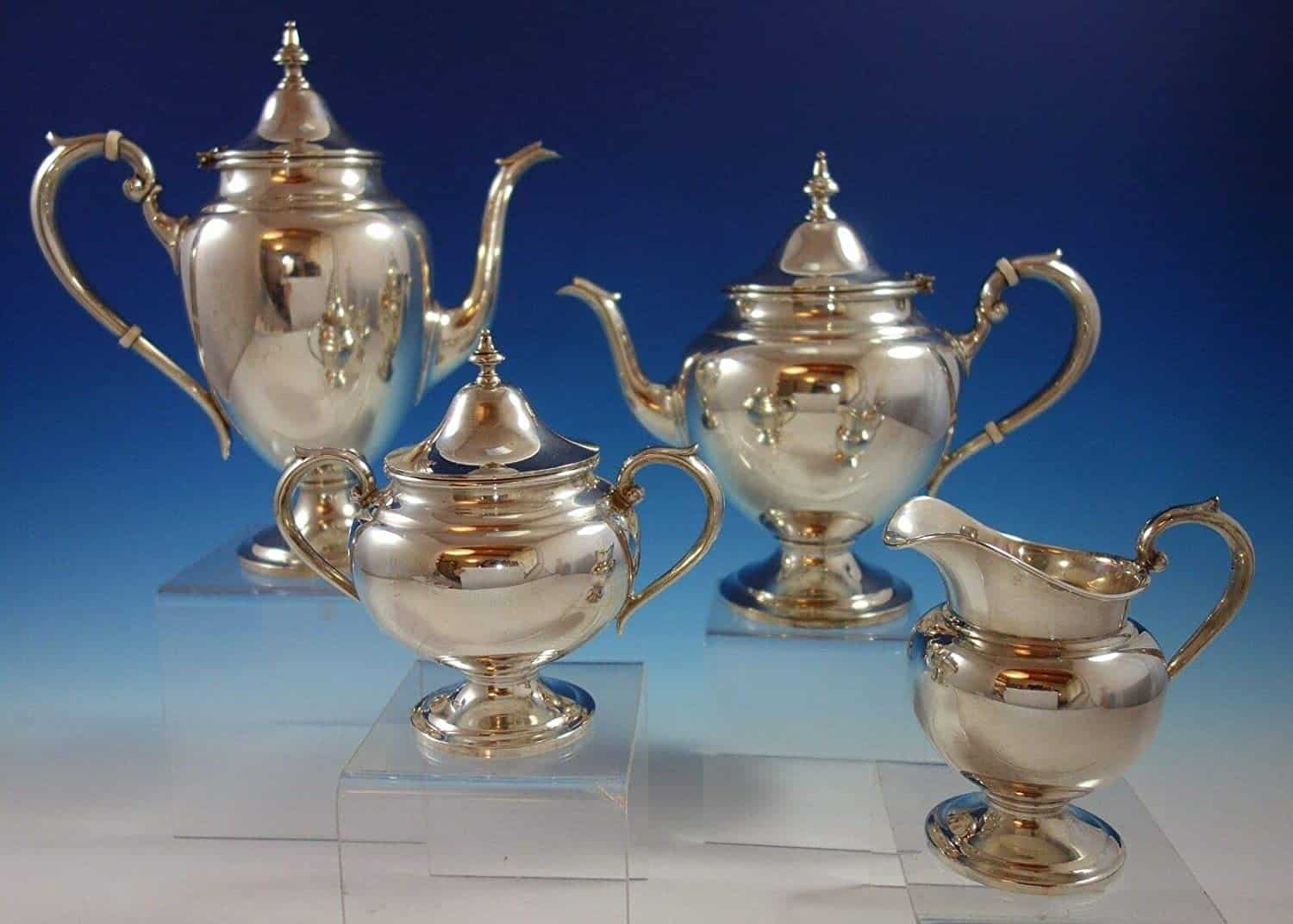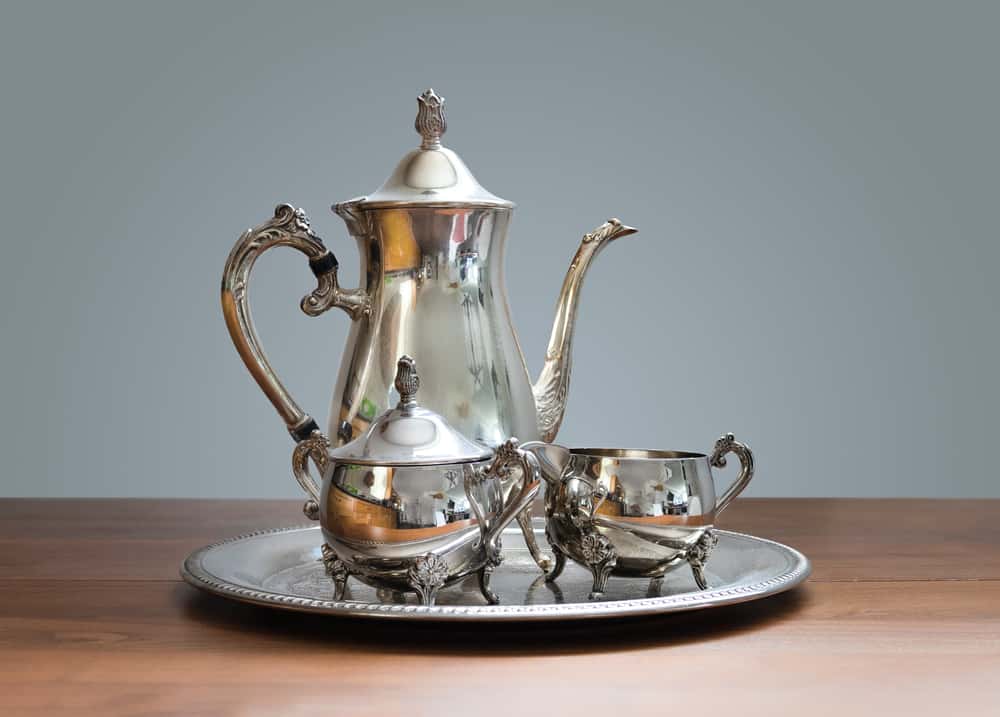Do you want to know how to store silver without tarnishing/scratching? Are you tired of having to polish it every now and then? Well, I understand you completely.
Recently I inherited some antique silverware from my grandma, and at first, I was really excited to own it. Then I remembered it will tarnish pretty fast if I don’t take good care of it, so I started doing some research. For a start, I was curious about what caused tarnish and scratches in the first place.
Tarnish appears as a chemical reaction between silver and environmental sulfur, found in wool, felt, and even in the air that we breathe. When that reaction happens, a thin layer of silver sulfide appears on the surface.
It is almost impossible to completely prevent the tarnish from appearing, but there are some great ways to store silver that will help minimize tarnishing and scratching.
Best Practices For Storing Silver

Your silver items will last for decades and even centuries if you follow these storing practices.
Store Your Silver Flatware In A Chest
One of the best options for storing silverware, silver dining cabinets have separate drawers for individual silver pieces, protecting them from scratching against each other.
Another advantage of silver flatware chests is that they reduce airflow, preventing sulfur from the air from coming into contact with your silverware, thus keeping your silver safe from tarnishing.
In addition, these chests are lined with a silver cloth, a type of flannel cotton fabric infused with anti-tarnishing agents or silver ions.
Wrap Your Silverware In A Silver Cloth
A silver cloth is designed to react with sulfur before the silverware is exposed for long enough to do so. This is accomplished by imbuing the flannel cotton fabric with silver ions, causing it to tarnish before your silverware.
These ions are eventually depleted. This silver cloth will no longer be effective against tarnish once the ions have been used up, but it will still protect your silverware from scratches. Silver cloths are used to wrap silverware or line specialist silver flatware boxes.
Acid-Free Tissue And Plastic Bag Combo
You can also use acid-free tissue paper to wrap your silver goods. This method will keep your cutlery from scratching and coming into contact with air.
You can put your silverware in a plastic bag after wrapping it in this paper. Remove as much air as possible from the bag and close it tightly for long-term storage. You can store many goods in a single plastic bag as long as they are wrapped in different tissue papers.
Place Your Silverware In Silver Cloth Bags
Large silver items can be stored in individual silver cloth bags. These anti-tarnish bags, which are usually zippered, might help to avoid excessive air circulation around your cutlery.
It is recommended that you select the bag’s size based on the size of the silver item you intend to store within. Also, avoid storing more than one silver item in the same bag, since this can lead them to scratch against each other.
Silver Cloth-Lined Jewelry Boxes
Jewelry boxes lined with silver cloth are ideal for safely storing silver jewelry and protecting it from tarnishing and scratching. These boxes look like silver flatware chests, but they’re made to keep jewels.
Add desiccant packets filled with silica gel to your jewelry boxes while storing silver jewelry. They will capture any extra humidity, preventing tarnishing of your jewelry.
Store Your Silver In a China Cabinet
It is not necessary to hide your silverware or silver jewelry when storing it. You can keep it on display if you want to, but you’ll need to keep the air circulation low and avoid excessive humidity.
Select a well-sealed china cabinet and add silica gel packets to absorb humidity. China cabinets are well-known for their ability to control airflow and temperature. It is commonly known that silver tarnishes more quickly when temperatures are excessively high or when temperature variations are extreme.
Use Your Silverware Once In A While
If you use your silverware on a regular basis, you will be forced to wash and clean it more frequently than if you kept it stored. To avoid some silver items becoming more tarnished than others, try to use them all equally often.
If you don’t use your silverware on a regular basis, clean it at least once a year. Cleaning your silverware more than 2-6 times per year will cause minor scratches, which will become more noticeable if you clean it too frequently. If there are any fine engravings or inscriptions on your silver, too much cleaning might dull them.
To prevent food residue from interacting with silver, quickly wash your silver cookware with warm, soapy water after each use. It should not be washed in the dishwasher because it may scratch the surface.
Use Chalk Instead Of Silica Gel Packets
If you don’t have any desiccant silica packets, you can place a piece of chalk in the corner of your china cabinet. You can also put it in your silver jewelry box or flatware chest. Chalk collects the excess moisture, reducing the chance of tarnish appearing on your silverware.
Silver Cloth Alternatives
When you don’t have a silver cloth, you can use some other fabrics to wrap and protect your silverware from tarnishing and scratching. 100% cotton and flannel cloths will also minimize the tarnishing and scratching of your silver items.
Waxing Your Silverware
You can use wax to seal your silverware and protect it from coming into contact with environmental sulfur. Not every wax is suitable for waxing silver though, you need to buy wax that’s intended to be used on silver.
Simply spray your silver items with this wax, and dab them with a cotton cloth until there are no visible wax streaks. This way, silver will stay shiny and tarnish-free for longer, but you will still need to dust it occasionally.
However, you should only wax your silverware if you don’t plan to use it for eating. Use silver wax on non-food silver items or antique silver cookware that you only want to display.
What Not To Do When Storing Silver

There are also several things that you should keep in mind and try to avoid when storing silver.
Newspaper Is Bad For Silver
While some storing methods will keep the tarnish away, some other techniques will make your silver tarnish faster, so you should avoid them altogether. For example, avoid wrapping your silverware in the newspaper. This type of paper is full of ink that contains acids, which will damage your silver over time.
Apart from the newspaper, you should never wrap silver in any other paper tissue that isn’t acid-free. Always look for tissue paper that’s labeled as acid-free.
Avoid Rubber Bands
Don’t store your silver in plastic bags or cellophane secured with rubber bands. Rubber bands won’t seal the bag well enough, and they could even damage your silverware. Rubber and latex can even eat away at your silver, which is another reason not to use rubber bands anywhere near your silver cookware and jewelry.
Keep An Eye On Temperature And Humidity
Don’t store any silver items in places where the temperature fluctuates significantly. If possible, keep your silver at room temperature. Also, avoid humid areas when storing your silverware, as the humidity accelerates the tarnishing process.
Dirty Silverware Is A Big NO
Never store your silverware when it is dirty or wet. Dirt and water will soon react with silver and cause the tarnish to appear. You need to properly clean and dry each silver item after the use and before storing it in its usual place.
Cardboard Boxes Aren’t Made For Storing Silver
Don’t store your silverware in cardboard boxes, as they will offer little to no protection from scratching, and they can introduce acid and humidity, accelerating the tarnishing process.
Don’t Mix Silver With Other Metals
Never store your silver with other metals, such as stainless steel, and aluminum, and even with other precious metals, such as gold. Mixing silver with other metals can cause scratching and tarnishing.
Exposing Silver To Sunlight
Sunlight can also cause a faster tarnishing, which means you shouldn’t store your silverware in places with lots of sunlight.
Storing The Silver Pieces Loose
When storing many silver pieces together, you should find a way to separate them from each other and don’t let them stay loose when stored in the drawer. When they are loose and mixed up, these silver items will brush against each other all the time, which will cause massive scratches with time.
Conclusion
It is nice to have nice antique silverware, but let’s be real: silver cookware and jewelry are extremely prone to scratches and tarnish. Sterling silver is a bit more resistant than fine silver, but you still need to take good care of how you store it. A proper storing is crucial for keeping it in a good shape, and there are a few general tips to do so:
- Wrap your silver items with a silver cloth, keep them in silver cloth bags, or place them in chests lined with a silver cloth.
- Reduce the airflow and temperature fluctuation in the area where you store your silverware.
- Avoid humid air at any cost. If needed, place silica gel packets or white chalk near your silverware. Silica gel and chalk will collect any excess moisture.
- Use your silverware every now and then to slow down the tarnish buildup.
- If you don’t plan to use it, wax your silverware to protect it from tarnishing.
- Polishing silver once a year will keep it safe from excessive tarnishing.
How do you store your silver cookware and jewelry? Share your tips! Also, if you have any questions, feel free to write them in the comments section!
